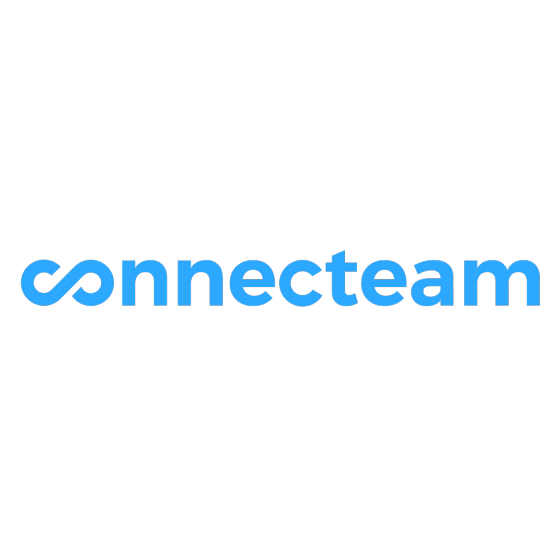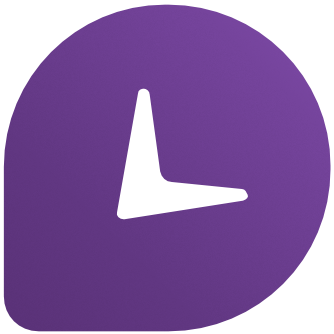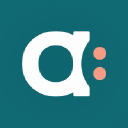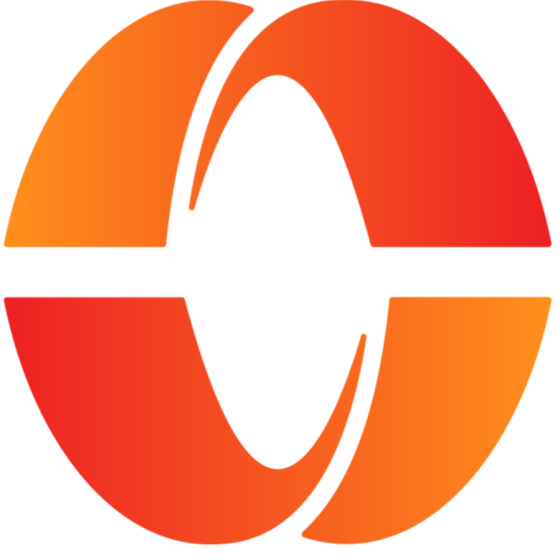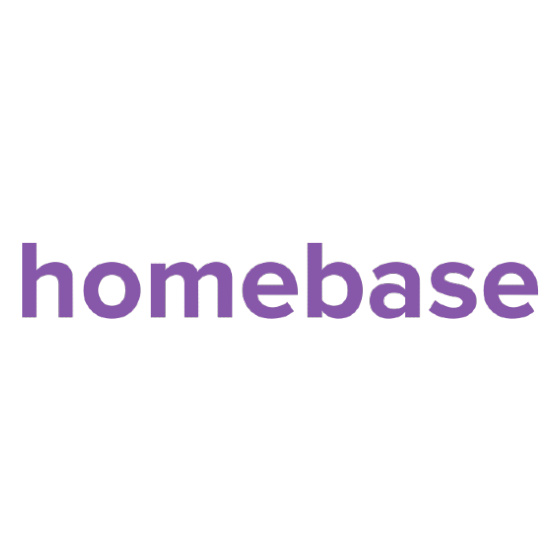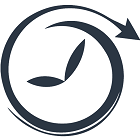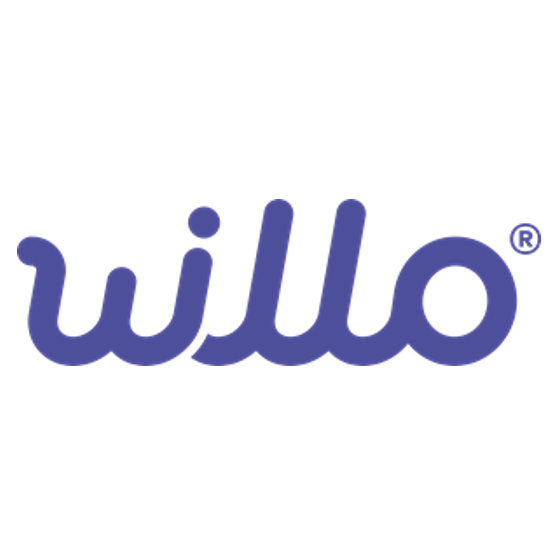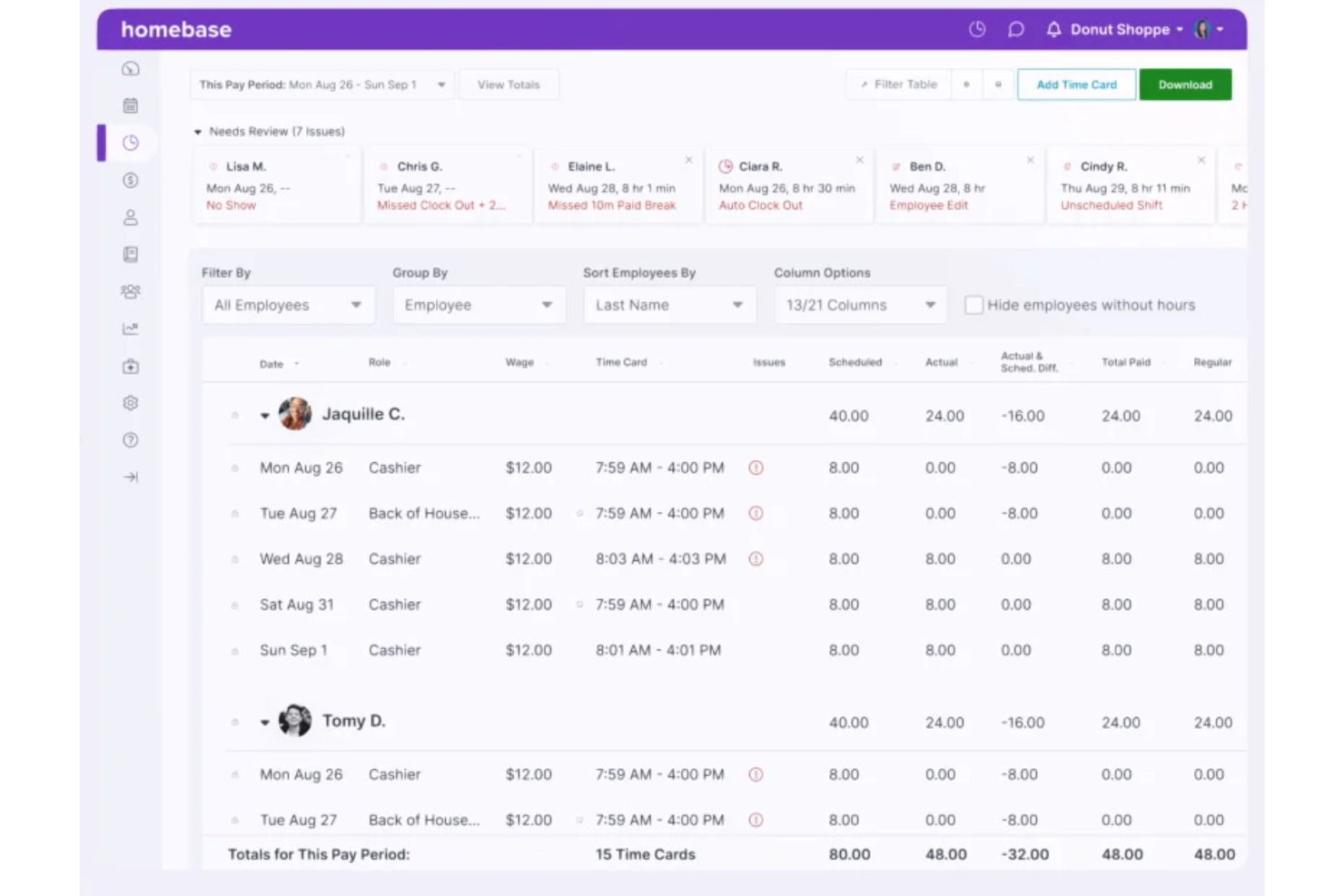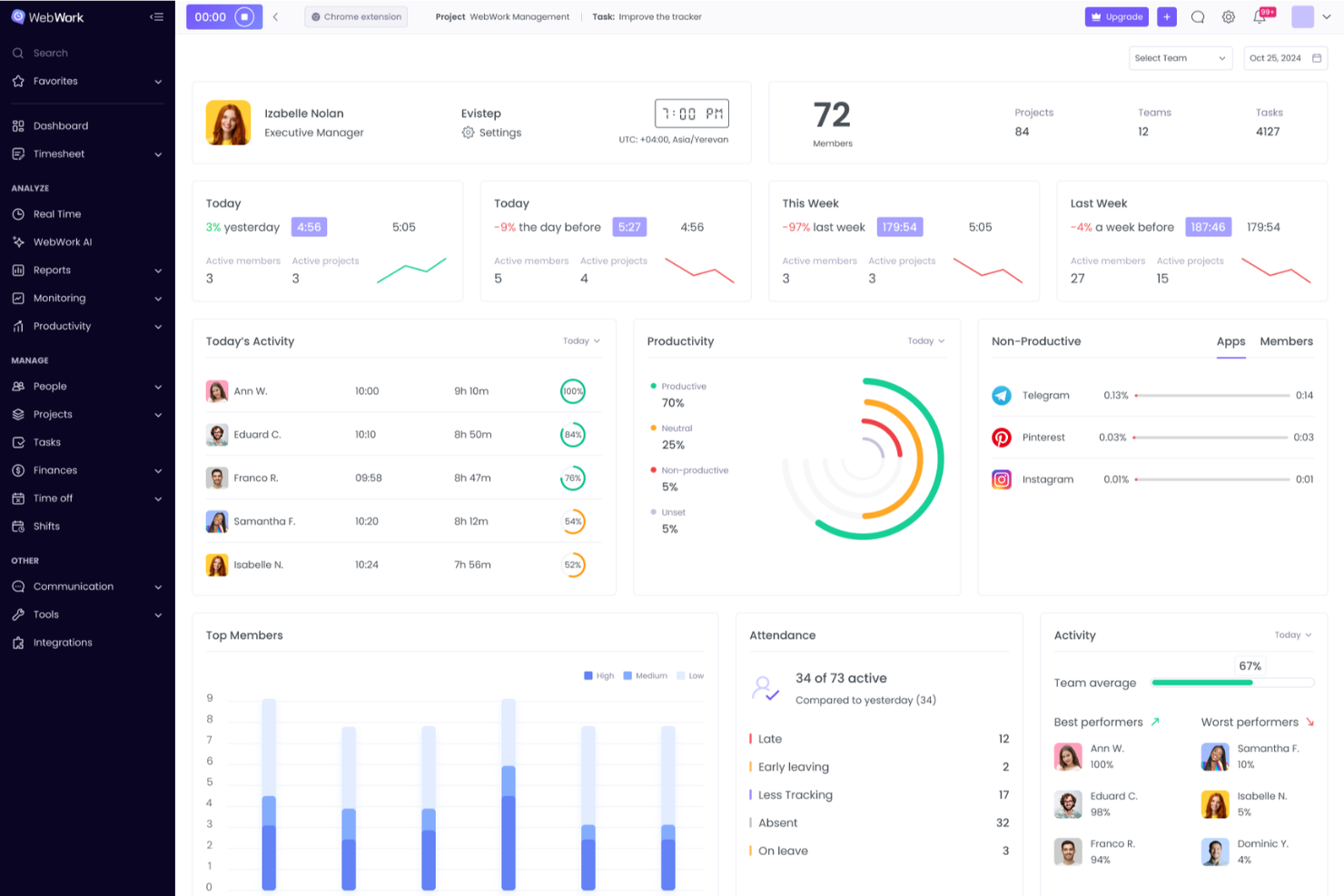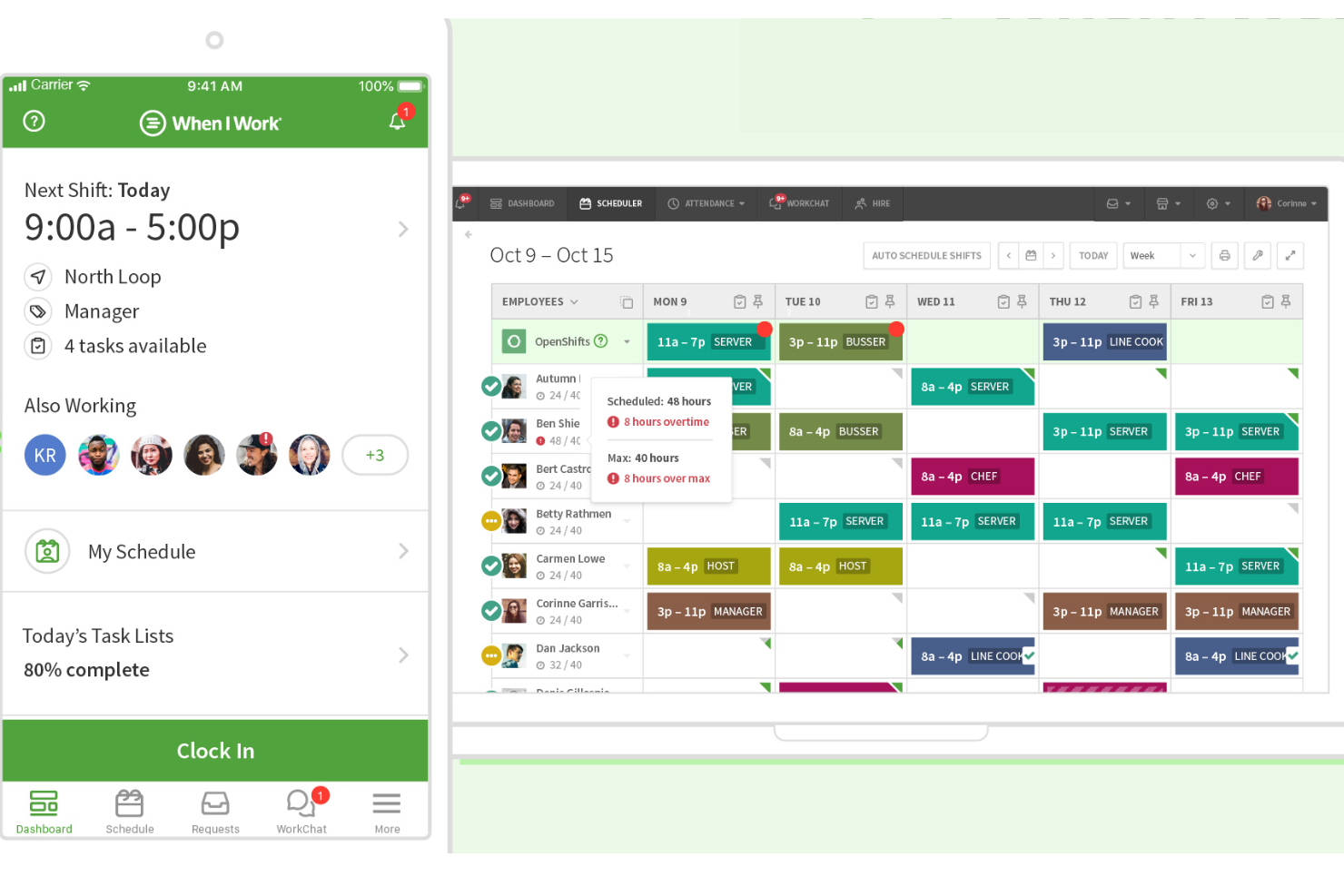10 Best Time and Attendance Software Shortlist
Here's my pick of the 10 best software from the 20 tools reviewed.
Get free help from our HR software advisors to find your match.
Are you tired of tracking your employee's vacation requests in a spreadsheet and looking for a better solution? Time and attendance software is the missing link you're looking for. These systems can help you record clock-in and clock-out times, manage leave requests, and calculate overtime for accurate payroll processing. However, with so many options on the market, finding the best option for your business can be time-consuming and overwhelming.
In this post, I'll help you speed up your selection process by sharing my insights on the best time and attendance software available, based on my experience as an HR specialist. I'll help you simplify your choices so you can narrow in on the best software that fits your needs.
Why Trust Our Software Reviews
We've been testing and reviewing HR software since 2019. As HR professionals ourselves, we know how critical and difficult it is to make the right decision when selecting software.
We invest in deep research to help our audience make better software purchasing decisions. We've tested more than 2,000 tools for different HR use cases and written over 1,000 comprehensive software reviews. Learn how we stay transparent, and take a look at our software review methodology.
Best Time and Attendance Software: Pricing Comparison Chart
This comparison chart summarizes pricing details for my top time and attendance tracking software selections to help you find the best system for your budget and business needs.
| Tool | Best For | Trial Info | Price | ||
|---|---|---|---|---|---|
| 1 | Best for GPS-based attendance tracking and built-in chat functionalities | 14-day free trial + free plan available | From $29/month (for up to 30 users, billed annually) + $0.5/user/month for each additional user | Website | |
| 2 | Best for accurate time tracking | 10-day free trial | From $5.99/user/month | Website | |
| 3 | Best for Western Europe absence tracking | Free demo available | Pricing upon request | Website | |
| 4 | Best for flexible scheduling across Canada | 21-day free trial | From $2.93/user/month | Website | |
| 5 | Best for enforcing automated attendance policies | Free demo available | Pricing upon request | Website | |
| 6 | Best for managing hourly employees | Free plan available | From $20/location/month | Website | |
| 7 | Best for capturing time and work data for global employees | 14-day free trial | From $6/user/month | Website | |
| 8 | Best real-time tracking, screenshots, and analytics | Free trial available | From $3.99/user/month | Website | |
| 9 | Best with labor cost tracking | Free trial available | From $2.50/user/month | Website | |
| 10 | Best for flexible time clocks with geofencing and kiosk mode | 14-day free trial | From $3.99/user/month + $19/month base fee | Website |
-

Rippling
Visit WebsiteThis is an aggregated rating for this tool including ratings from Crozdesk users and ratings from other sites.4.8 -

Willo
Visit WebsiteThis is an aggregated rating for this tool including ratings from Crozdesk users and ratings from other sites.4.8 -

edays
Visit WebsiteThis is an aggregated rating for this tool including ratings from Crozdesk users and ratings from other sites.4.3
Best Time and Attendance Software Reviews
Here are my detailed summaries of the best time and attendance software that made it into my top 10 list, including notes on why I picked them. Each review offers a detailed look at the key features, pros & cons, integrations, and ideal use cases of each system to help you find the best tool for you.
Best for GPS-based attendance tracking and built-in chat functionalities
Connecteam is a comprehensive workforce management tool that provides businesses with a centralized platform to streamline their operations and improve employee engagement. The tool helps to simplify and automate processes, enhance communication and collaboration, and increase overall productivity. It does all this primarily by providing real-time oversight of operations, making it an ideal solution for businesses seeking to monitor and manage their workforce effectively and efficiently.
Why I picked Connecteam: I picked it because it has many features that help you make it easy for your employees to record their time and for you to track it, while maintaining safety at the forefront of your operations. For example, employees can clock in and out with personalized pin codes, from a shared secure device, which allows for accurate time tracking and eliminates the need for manual timesheets. Meanwhile, you have the ability to pull reports from the backend to see timestamps and geo-location pins and ensure everything is in order.
The app generates real-time reports on various aspects of employee performance, including time tracking, task completion, and shift attendance. These reports provide valuable insights for you to make data-driven decisions and can help simplify time and attendance management, improve accuracy, and enhance overall workforce productivity.
Connecteam Standout Features and Integrations:
Standout Features include GPS-based geo-fencing which prevents out-of-site clock-in / time theft. Also, its reminders help you set break and overtime rules in accordance with local, state, and federal labor laws and the platform will automatically list hours, breaks, overtime, and time off on timesheets, so they can be ready for payroll. Finally, its shift scheduling and management tools allow managers to create and assign shifts to employees. Employees can view their schedules, request shift changes, and receive notifications about upcoming shifts.
The platform additionally offers several communication tools, including personalized company news feeds, secure instant messaging, surveys, and a knowledge base.
Integrations include Paychex, Xero, Gusto, QuickBooks Payroll (online + desktop), Zapier, Google Calendar, API access, and others.
Pros and cons
Pros:
- Platform is customizable to meet specific needs
- Scalable for growing businesses
- Provides comprehensive support and training for users
Cons:
- Notifications are not always accurate
- Pricing structure can be complex
Monitask is an employee monitoring and productivity tracking software that caters to remote and distributed teams. It provides tools that monitor employee hours, work patterns, and task performance in real-time. Managers can easily access attendance records and activity logs to track productivity.
Why I picked Monitask: This software helps you manage remote teams by providing a clear picture of attendance and work hours. With features like real-time activity tracking and automated attendance logs, it ensures that you know when and where your team is working. It offers visibility without being intrusive, allowing you to focus on project management while keeping track of your team’s work patterns.
The automated reports are easy to generate, so you can quickly access data on who’s clocking in and out. This makes managing large or remote teams more efficient. The activity monitoring is especially useful for ensuring accountability across your organization. This information helps you manage attendance and ensure everyone is staying on track.
Monitask Standout Features and Integrations:
Standout features include real-time attendance tracking, activity monitoring with screenshots, and automated reporting. You can monitor when employees clock in and out without being invasive. Attendance logs are stored securely, ensuring compliance.
Monitask also provides visibility into team work patterns, which helps you make informed decisions. The software is simple to use, even for teams unfamiliar with time-tracking tools. Its reporting features give you access to clear and actionable data.
Integrations include Trello, Asana, Basecamp, Jira, ClickUp, Microsoft Teams, Slack, Zoho, Monday.com, and Google Drive.
Pros and cons
Pros:
- Easy to onboard your team
- Automatic attendance logs
- Real-time attendance tracking
Cons:
- Limited mobile features
- Lacks offline tracking
edays is an absence management software that helps you handle complex leave policies, track working hours, and monitor absences across locations. It’s designed to fit organizations that operate across Western Europe and need to stay compliant with different labor laws.
Why I picked edays: I picked edays because it offers highly configurable absence tracking that works across multiple jurisdictions. You can create custom leave types, set accrual rules, and automate carryovers, which is useful when you’re managing employees across Western Europe’s varied labor regulations.
The system also helps you visualize absences with shared calendars and team views, making it easier to spot patterns and avoid scheduling conflicts. Its sickness management tools include automated alerts and return-to-work forms, helping you stay ahead of unplanned absences.
edays Standout Features and Integrations:
Standout features include public holiday management, where you can import country-specific holidays to avoid manual updates. You also get HR document management, allowing you to store policies, forms, and employee files in one secure location. Its entitlement calculators help you manage maternity, paternity, and statutory leave accurately.
The system supports multi-language use, making it easier for teams operating in different countries.
Integrations include Cornerstone OnDemand, Cegid, IntelliHR, ELMO, Outlook, Gmail, iCal, ERP systems, time clock devices, custom API, and SFTP.
Pros and cons
Pros:
- Supports multi-country compliance needs
- Customizable absence types and entitlement rules
- Reduces admin time for managing absences
Cons:
- Advanced features may require more onboarding time
- Mobile app is limited compared to desktop version
Agendrix is a Canadian workforce management platform that offers flexible online employee scheduling, time tracking, and internal communication tools for small to mid-sized shift-based businesses. It helps managers coordinate staffing needs across departments, manage time off and availability, and keep distributed teams aligned.
Why I picked Agendrix: I picked Agendrix because it’s purpose-built for shift-based teams with fluctuating availability. You can build schedules manually or let the system auto-fill them based on employee availability, time-off requests, and custom workload settings. It also allows you to manage multiple locations with role-based access, which is useful for teams spread across departments or sites.
With Agendrix, staff can check schedules, confirm shifts, request changes, or submit time-off requests directly from the mobile app. Managers can communicate updates via in-app messaging or shared newsfeeds and even attach task lists to shifts to clarify daily responsibilities.
Agendrix Standout Features and Integrations:
Standout features include collaborative schedule building across locations, auto-scheduling, and mobile access to schedules and shift updates. You can assign custom permissions to managers, automate notifications for shift changes or approvals, and centralize availability and time-off requests. HR tools include employee document storage, e-signature workflows, and surveys.
Agendrix also supports task-level shift planning so employees know what’s expected each day. The mobile app is available for iOS and Android, and the system supports multiple clock-in methods, including geolocation and kiosks.
Integrations include: EmployerD, Nethris, Sage 50, Acomba, QuickBooks, Ceridian Powerpay, ADP Workforce Now, Payworks, Lightspeed, Azur, Easypay, BeLocum, Hopem, and Folks HR.
Pros and cons
Pros:
- Built-in messaging and notifications
- Supports printable, email, and mobile schedule sharing
- Integrates with major Canadian payroll systems
Cons:
- Limited customization options for reports and analytics
- Certain integrations may require manual setup
Paylocity is a workforce management platform designed to help businesses handle their human resources and payroll needs. One of its standout tools is its time and attendance software, which helps businesses track employee hours, manage schedules, and ensure compliance with labor laws.
Why I picked Paylocity: Paylocity’s time and attendance software offers automated time tracking, making it easy to capture employee hours accurately, whether they're clocking in at a physical location or remotely. The system tracks hours worked, breaks, and overtime in real time, helping you stay compliant with labor regulations. Its customizable notifications alert employees and managers to any missing punches, making it easier to address timekeeping errors right away.
In addition to tracking time, Paylocity’s software provides reports with useful insights into patterns like absenteeism and tardiness. You can also set attendance policies in the system and automatically apply breaks, overtime rules, and attendance points, so you don’t have to worry about tracking them manually.
Paylocity Standout Features and Integrations:
Standout features include scheduling tools that let you build out schedules that match your staffing needs. Employees can also pick up available shifts without having to go back and forth over emails or texts. You can also access labor forecasting, which helps you plan schedules based on things like expected customer demand.
Integrations include ClearStar, Microsoft Dynamics 365, 7shifts, AirMason, APA Benefits, Azure, Atlassian, Asana, Box, ClearCompany, Dropbox, Freshdesk, Google Workspace, Greenhouse, HubSpot, Slack, Salesforce, Trakstar, and Zoho People.
Pros and cons
Pros:
- Flexible scheduling features
- Employee self-service options
- Real-time overtime alerts
Cons:
- Lacks support for managing independent contractors
- Setup can be time consuming
Homebase is a comprehensive platform designed to simplify the management of hourly teams. It offers tools for employee scheduling, time tracking, payroll, team communication, hiring, onboarding, and compliance.
Why I picked Homebase: Homebase's time tracking feature transforms any device into a time clock, allowing your team to clock in and out, track breaks, and log overtime. This flexibility ensures accurate timekeeping and simplifies payroll preparation. Additionally, the system can prevent early clock-ins and automatically clock out employees, helping you control labor costs effectively.
Another valuable aspect is the GPS-enabled time clock, which allows you to monitor where employees clock in and out. This feature is particularly beneficial for managing remote or field teams, as it provides assurance that employees are at the correct location during work hours. Combined with built-in messaging, reminders, and alerts, Homebase keeps your team connected and accountable, regardless of their physical location.
Homebase Standout Features and Integrations:
Standout features include a photo capture function that snaps a picture of employees as they clock in and out, reducing the risk of buddy punching and ensuring that the right person is on the job. The platform also offers automatic calculation of hours and wages, including breaks, overtime, and time off, which streamlines the payroll process and minimizes errors.
Additionally, Homebase provides labor cost reporting by hour, department, and role, giving you detailed insights to help manage your budget and staffing needs effectively.
Integrations include Square, Clover, Toast, Shopify, ADP, Gusto, Paychex, QuickBooks, Restaurant365, Indeed, Google Jobs, and ZipRecruiter.
Pros and cons
Pros:
- The platform facilitates effective communication among team members
- Employee self-service for schedules and time-off
- Comprehensive time tracking
Cons:
- Payroll limited to US-based businesses
- Onboarding and HR compliance is limited to the all-in-one plan
Replicon provides a unified time-tracking platform that enables users to capture, validate, extract, analyze, and integrate time data to increase the productivity and efficiency of a distributed workforce. This includes remote employees, contractors, and field workers, in addition to full-time and part-time employees.
Why I picked Replicon: I picked Replicon because it covers all aspects of time tracking, including clocking in and out, taking breaks, and activity tracking. The tool also addresses shift assignments, scheduling, availability, and absence management. Moreover, Replicon includes a self-service option for time off.
With Replicon, you can track real-time task progress against set targets for improved productivity. Besides this, the data collected is validated for accuracy across business functions through streamlined AI workflows before they smoothly flow into your accounting, ERP, and billing systems.
Replicon Standout Features and Integrations:
Standout features include customizable project time tracking and mobile compatible timesheets to track and calculate project time frames and costs. The software features accurate location data to merge with timesheets and invoices, assuring accuracy and transparency in billable time rate management. This simplifies project accounting and multi-level client project management. Using Replicon, you can also build approval workflows and configure data validation rules to be compliant with business process requirements.
Moreover, Replicon also has a mobile app for employees to easily view and update their shift schedules. With Replicon, you can convert time data into costs, utilization, billing, compensation, and other metrics with AI-powered capabilities.
Integrations include 55+ third-party applications such as Atlassian, BambooHR, FreshBooks, Github, Google Calendar, MYOB, Quickbooks, Salesforce, SAP Concur, ServiceNow, Slack, Visual Studio Code, and others.
Pros and cons
Pros:
- Notifies employees to fill timesheets and alerts them instantly upon approval
- PTO projection feature helps employees plan ahead
- Intuitive and user-friendly UI
Cons:
- No pre-selection options on timesheets for easy filling
- Time off requests need to be manually updated in calendars
Best real-time tracking, screenshots, and analytics
WebWork Time Tracker is an employee time tracking software that offers automated time tracking, employee monitoring, and workforce management tools.
Why I picked WebWork Time Tracker: It automatically records work hours while capturing screenshots, providing tangible proof of productivity for your team. This can be especially useful for remote teams where direct supervision isn't possible. By having a visual record of what your team is working on, you can easily verify productivity levels and ensure that work hours are being used effectively.
Another valuable feature of WebWork Time Tracker is its attendance tracking and shift management capabilities. It simplifies scheduling by enabling you to create unlimited shifts and track attendance, ensuring that your team is always adequately staffed. By automating these processes, you reduce the administrative burden on managers and allow them to focus more on strategic tasks.
WebWork Time Tracker Standout Features and Integrations:
Standout features include productivity monitoring tools that track daily activity levels, offering insights into your team's performance and helping identify areas for improvement. It also records app and website usage during work hours.
Additionally, the integration of payroll tracking helps in automating payroll calculations and generating reports, ensuring accurate and timely payment processes. It even offers project and task management features that let you handle multiple projects and tasks while tracking their completion.
Integrations include Asana, Slack, Deel, GitHub, ClickUp, Trello, Jira, Xero, Bitbucket, Zapier, Todoist, and Bitwage.
Pros and cons
Pros:
- Attendance and leave management features
- Real-time monitoring
- Accurate time tracking and detailed productivity reports
Cons:
- Reporting tools could benefit from more customization options
- The leave balancing feature could be improved
When I Work is an employee scheduling and time tracking software designed to simplify workforce management. It enables businesses to efficiently manage employee schedules, track work hours, and handle payroll processing. By turning any device into a time clock, it offers flexibility and accessibility for both managers and employees.
Why I picked When I Work: I like that it offers an online time clock with GPS capabilities. This allows employees to clock in and out accurately across various devices, ensuring precise time tracking. Additionally, the system offers geofencing options to prevent early clock-ins and buddy punching, promoting accountability and reducing time theft.
Another valuable aspect is the ability to manage labor costs effectively through pay rules and schedule integration. By setting specific pay rules and integrating them with employee schedules, businesses can control expenses and minimize unnecessary overtime. This integration ensures that payroll is accurate and aligns with the actual hours worked, streamlining the payroll process.
When I Work Standout Features and Integrations:
Standout Features include break management, which allows employees to log their breaks easily, ensuring compliance with labor laws and accurate tracking of work hours. The system also offers timesheet editing, enabling managers to make necessary adjustments before finalizing payroll. Additionally, absenteeism tracking helps monitor employee attendance patterns, allowing for proactive management of attendance issues.
Integrations include Gusto, ADP, Square Payroll, Paychex, QuickBooks Online, Onpay, and Zapier.
Pros and cons
Pros:
- Flexible clock-in options
- Integrated scheduling and time tracking
- Facilitates team communication
Cons:
- Could offer more customizable scheduling options
- Time and attendance tracking is a paid add-on
Buddy Punch
Best for flexible time clocks with geofencing and kiosk mode
Buddy Punch is a comprehensive time and attendance tracking software that streamlines workforce management. It offers GPS tracking, geofencing, clock-in alerts and reminders, time-off monitoring, built-in break scheduling, and reporting.
Why I picked Buddy Punch: Buddy Punch supports various punching techniques, including PIN, QR code scanning, time kiosks, login and password, and facial recognition. The software locks particular devices, adds webcam photographs to punches, and assigns remote workers internet protocol (IP) addresses. With its robust geofencing and GPS tracking features, Buddy Punch also restricts punches to certain hours or scheduled shifts to prevent buddy punching and off-site clock-ins.
You can create custom overtime policies using the overtime monitoring feature to control labor costs. On the other hand, the PTO tracker permits businesses to establish PTO guidelines and accrual rates. The PTO balance gets automatically updated when you review, accept, or deny these requests.
Buddy Punch Standout Features and Integrations:
Standout features include clock-in and clock-out options involving a four-digit PIN code, username with password, facial recognition using a webcam, or QR codes. This ensures security and prevents employees from punching their friends in or out. Buddy Punch also enables managers to track employees' hours in real-time in order to keep track of attendance, time off requests, and overtime. Buddy Punch also provides automated PTO management and generates employee leave summary reports.
Additionally, Buddy Punch has its own proprietary payroll software that easily calculates compensation for unpaid time accrual. Its advanced payroll reporting capabilities enable employers to create employee time data reports in minutes and identify any attendance or overtime issues. You can also easily create employee schedules with the software’s drag-and-drop functionality and send mobile alerts to update your workers about shift changes.
Integrations include 10+ third-party applications such as ADP Workforce Now, Excel, Gusto, Paychex, Paylocity, Quickbooks, PayPlus, SurePayroll, Workday, and others. Buddy Punch also has an API that integrates with Zapier to connect with over 1000+ websites and apps.
Pros and cons
Pros:
- Employers can set different pay rates based on departments
- Accessibility via mobile app
- Easy submission of time cards
Cons:
- Occasional glitches in punch-ins and punch-outs
- Lacks the ability to review past pay periods
Other Time and Attendance Software
Here are a few more time and attendance software options. I didn’t have room for a full review for each of these but they are still worthy of consideration:
- Deputy
For online employee scheduling
- Clockify
For hybrid teams seeking integrated client billing and expensing tools
- EasyClocking
For biometric attendance tracking
- ADP
For digital time clocking and buddy punching prevention
- Workday Workforce Management
For unifying time data sources and actions
- Rippling
For customizing time management workflows
- Deel
For managing payments for a global team
- Insightful
For real-time attendance tracking and reporting
- Intelogos
For AI-driven team performance insights
- ADP Workforce Now
For HR & payroll integration
Related HR Software Reviews
If you still haven't found what you're looking for here, check out these other related tools that we've tested and evaluated:
- HR Software
- Payroll Software
- Recruiting Software
- Employer of Record Services
- Applicant Tracking Systems
- Workforce Management Software
Selection Criteria for Time and Attendance Software
Selecting time and attendance software to include in my list is a nuanced process that hinges on understanding the software's functionality and how well it meets specific use cases. Through personal trials and extensive research, I've identified a set of criteria crucial for evaluating these solutions. Here's what I look for in my research:
Core Time and Attendance Software Functionalities (25% of total score): To be considered for inclusion in this list, each solution had to fulfill these common use cases first:
- Real-time attendance tracking
- Leave and absence management
- Schedule management
- Overtime monitoring
- Automated timesheet generation
Additional Standout Features (25% of total score): To help me find the best software out of numerous available options, I also kept a keen eye out for unique features, including the following:
- Mobile access with geofencing capabilities
- Integration with payroll and HR systems
- Biometric integration for secure authentication
- Customizable alerts and notifications for management and employees
- Audit trails and comprehensive reporting for compliance and insights
Usability (10% of total score): To evaluate the usability of each system, I considered the following:
- Intuitive interfaces, such as drag-and-drop scheduling calendars
- Clear, understandable dashboard and reporting features
- Mobile app design that complements the desktop experience
- Simplified clock-in and clock-out processes for employees
Onboarding (10% of total score): To get a sense of each software provider's customer onboarding process, I considered the following factors:
- Comprehensive training materials, such as videos and guides
- Interactive product tours and chatbots for immediate assistance
- Webinars and community forums for deeper learning
- Template and preset configurations for fast setup
Customer Support (10% of total score): To evaluate the level of customer support each vendor offered, I considered the following:
- Availability of 24/7 support through multiple channels
- Promptness and effectiveness of response to inquiries
- Access to a knowledge base for self-service troubleshooting
- Dedicated account management for personalized assistance
Value for Price (10% of total score): To gauge the value of each software, I considered the following factors:
- Transparent pricing models without hidden fees
- Scalability of plans to fit different business sizes
- Free trials or demos to assess the software before purchase
- Return on investment through efficiency gains and compliance benefits
Customer Reviews (10% of total score): Evaluating customer reviews is the final element of my selection process, which helps me understand how well a product performs in the hands of real users. Here are the factors I considered:
- Overall satisfaction with functionality and performance
- User experiences with software reliability and uptime
- Feedback on the effectiveness of customer support
- Reviews on ease of use and implementation success
Using this assessment framework helped me identify the time and attendance software that goes beyond basic requirements to offer additional value through unique features, intuitive usability, smooth onboarding, effective support, and overall value for price.
How to Choose Time and Attendance Software
As you work through your own unique software selection process, keep the following points in mind:
- Identify Specific Needs: Understanding the specific needs of your business is crucial in selecting the right time and attendance software. Consider the size of your workforce, the complexity of your scheduling needs, and any unique compliance requirements your industry might have. For example, a manufacturing company with shift workers will have different requirements than a consulting firm with primarily salaried employees working standard hours. This consideration helps ensure that the software you choose can effectively handle your specific scheduling, tracking, and reporting needs.
- Integration Capabilities: The ability of the time and attendance software to integrate seamlessly with other systems, such as payroll and HR management software, is essential. Integration reduces manual data entry, minimizes errors, and streamlines processes. For instance, time and attendance data that automatically flows into payroll systems can significantly reduce the time spent on payroll processing and increase accuracy in wage calculations.
- Compliance Features: Ensuring compliance with labor laws and industry regulations is a significant concern for many businesses. Look for time and attendance software that offers features to help manage compliance, such as tracking overtime, managing leave according to legal requirements, and generating reports for audit purposes. These features can help businesses avoid costly penalties and ensure they meet all legal obligations.
- Scalability: The chosen time and attendance software should be able to grow with your business. Consider whether the software can accommodate an increasing number of employees, multiple locations, and evolving business needs. Scalability is particularly important for startups and growing companies that anticipate significant changes in size or operations over the next few years.
- User Experience and Support: A user-friendly interface and strong customer support are vital for ensuring the software is adopted by your staff and that any issues are quickly resolved. Look for software that is intuitive for employees to use for clocking in and out, requesting time off, and checking their schedules. Additionally, evaluate the quality of customer support provided by the software vendor, including availability, response times, and access to resources like training materials and user forums.
These considerations are designed to guide you through the selection process, ensuring that the time and attendance software you choose not only meets your current needs but is also a valuable tool for managing your workforce efficiently and effectively in the long term.
Trends in Time and Attendance Software for 2025
Recent product updates, press releases, and release logs from leading time and attendance tools reveal several noteworthy trends that support the evolving priorities and challenges HR professionals experience. Here are several trends you should know about:
Most Important and In-Demand Features
- Enhanced Compliance Features: Software updates have heavily focused on features that ensure compliance with evolving labor laws across different jurisdictions—particularly when catering to global businesses. This includes automated tracking of work hours, rest breaks, and overtime in line with specific legal requirements, reducing the risk of non-compliance penalties.
- Mobile Access and Geofencing: The functionality for mobile access, including clock-in/out capabilities and geofencing, has seen a rapid evolution. This trend reflects the growing need for flexibility and the ability to manage remote or field workers effectively, ensuring accurate time tracking regardless of location.
- Biometric Authentication: The use of biometric data for clocking in and out has become more common, offering a secure and fraud-resistant method of verifying employee attendance. This technology is particularly novel in its ability to prevent buddy punching and time theft.
- Real-Time Attendance Tracking: The demand for real-time attendance tracking capabilities highlights the need for immediate visibility into workforce presence and availability, crucial for dynamic scheduling and immediate decision-making.
Features Becoming Less Important
- Traditional Punch Clocks: The reliance on traditional punch clocks and manual timesheet entries is diminishing. The shift towards digital and mobile solutions indicates a move away from these outdated methods, driven by the demand for more accurate and efficient time-tracking systems.
These trends underscore a broader shift towards technology-driven solutions that cater to the complex, changing needs of modern workplaces. By harnessing these innovations, HR professionals can better navigate the challenges of managing a diverse and dynamic workforce, ensuring compliance, efficiency, and strategic workforce management.
What is Time and Attendance Software?
Time and attendance software is a digital tool designed for tracking and managing employee work hours and attendance. It automates the process of recording when employees start and end their workdays, manages leave and absences, and calculates overtime and holidays.
The purpose is to integrate with payroll systems, ensuring accurate and efficient payroll processing. It helps businesses maintain compliance with labor laws, reduces manual record-keeping errors, and provides valuable insights into workforce productivity and labor costs.
Features of Time and Attendance Software
When selecting software, it's important to consider features that cater to your unique business needs. Below are the most significant features I look for in time and attendance software:
- Real-time Attendance Tracking: This feature allows for the immediate capture of employee clock-ins and clock-outs. It's essential for maintaining accurate work records, thereby ensuring compliance with labor regulations and reducing the chance of errors in payroll processing.
- Mobile Access and Geofencing: Enables employees to record attendance via mobile devices and restricts clock-ins to designated locations. This flexibility supports remote or field workers while controlling where and when employees can register their work hours, aiding in adherence to work policies and schedules.
- Biometric Integration: Utilizes biometric data for attendance verification, such as fingerprints or facial recognition. This method minimizes time theft and buddy punching, ensuring a more accurate and secure record of employee work hours.
- Automated Timesheet Generation: Automatically compiles timesheets based on recorded work hours. It streamlines payroll processing, reduces manual data entry errors, and helps in upholding labor law compliance by providing transparent, accurate work records.
- Leave and Absence Management: Manages leave requests and tracks employee absences within the same platform. This feature simplifies leave administration, supports compliance with leave policies, and offers insights into patterns that could affect productivity.
- Schedule Management: Enables the creation and distribution of employee schedules. Effective schedule management aids in aligning workforce allocation with operational needs, ensuring labor cost efficiency and compliance with working hours regulations.
- Overtime Monitoring: Tracks and manages overtime hours worked by employees. This is critical for complying with overtime pay regulations, controlling labor costs, and preventing employee burnout by monitoring excessive work hours.
- Audit Trails and Reporting: Provides detailed logs of all system activities and comprehensive reporting capabilities. Audit trails are vital for legal compliance and dispute resolution, while reports offer valuable insights into operational efficiency and labor cost management.
- Integration Capabilities: Seamlessly integrates with payroll and HR systems. This ensures that time and attendance data accurately flows into payroll processing and HR management, reducing administrative burdens and enhancing data consistency.
- Customizable Alerts and Notifications: Sends automated alerts for anomalies such as missed clock-ins or scheduling conflicts. Alerts help in promptly addressing issues that could lead to compliance risks or payroll errors, thereby enhancing operational efficiency.
Selecting a time and attendance software with the right combination of these features can significantly impact your organization's ability to manage its workforce efficiently. The goal is to choose a system that is not only comprehensive and compliant but also adaptable to the evolving needs of your business and its workforce.
Benefits of Time and Attendance Software
Time and attendance software offers numerous benefits, including streamlined operations, enhanced compliance, and improved overall productivity. These systems reduce manual errors and provide real-time insights into employee work patterns. Here are several benefits you can expect to gain by implementing a new timekeeping system:
- Increased Accuracy in Payroll Processing: By automating the time tracking process, time and attendance software significantly reduces the likelihood of errors in payroll, ensuring employees are paid accurately for their hours worked. This precision benefits the business by minimizing overpayments and disputes related to payroll.
- Improved Regulatory Compliance: The software helps organizations adhere to labor laws and regulations by automatically applying relevant rules regarding overtime, breaks, and leave. This capability protects businesses from potential fines and legal issues associated with non-compliance.
- Enhanced Workforce Productivity: With features like real-time attendance tracking and absence management, the software enables managers to quickly address staffing gaps and make informed decisions about labor allocation, thereby optimizing workforce productivity.
- Reduced Administrative Burden: Automating the collection, calculation, and reporting of work hours cuts down on the administrative tasks required of HR and payroll staff, freeing them to focus on more strategic initiatives within the organization.
- Valuable Insights into Labor Costs and Trends: Time and attendance software provides detailed reports and analytics on labor costs and employee work patterns, offering valuable insights that can inform business strategy and help manage budgets more effectively.
For potential buyers of time and attendance software, understanding these benefits is crucial. The right software not only facilitates smoother operations and compliance with labor laws but also equips management with the tools needed to analyze and optimize workforce productivity and cost-efficiency.
Costs & Pricing for Time and Attendance Software
Choosing the right time and attendance software can significantly impact your business operations, offering solutions for tracking employee hours, managing schedules, and ensuring compliance with labor laws. Understanding the various plan options and their pricing structures is crucial to selecting a system that meets your business needs while staying within budget.
Plan Comparison Table for Time and Attendance Software
Below is a table that outlines the pricing and plan structures commonly found in time and attendance software, designed to help you navigate your options.
| Plan Type | Average Price | Common Features |
|---|---|---|
| Free | $0 | Basic time tracking, limited reports, and access for a small number of users |
| Basic | $2-10 per user/month | Time tracking, basic scheduling, payroll integration, and basic reporting |
| Professional | $10-20 per user/month | Advanced scheduling, leave management, mobile access, and enhanced reporting |
| Enterprise | Custom pricing | Custom integrations, advanced analytics, priority support, and unlimited users |
When evaluating time and attendance software, it's important to consider both your budget and your organization's current and future needs. While a free plan might suffice for very small businesses or those just starting, growing businesses will likely require the more advanced features offered in professional or enterprise plans.
FAQs about Time and Attendance Software
Here are the answers to some frequently asked questions about time and attendance software and how they work:
What are the benefits of using time and attendance tracking software?
The best time and attendance systems promise many benefits:
- Automating the process of calculating working hour
- Preventing human errors in the accounting process
- Maintaining compliance with labor laws using proof of attendance
- Saving time and money on lengthy paperwork
- Keeping employees informed in real-time about shift changes
- Tracking and managing time-off requests and approvals
- Monitoring employee clock-ins and clock-outs to prevent thefts like buddy clocking
- Gaining insights into project time and costs and optimize resources accordingly
Time tracking software offers many more benefits that enable your business to function productively and generate industry-best results.
What is geofencing?
Geofencing helps monitor remote workers’ login times, locations and devices. Geofencing utilizes GPS technology to monitor the whereabouts of your remote workers.
Geofencing derives its name from a “geofence,” or virtual border, around the chosen site. The geofencing feature mandates employees to clock-in while inside your company’s premises.
With geofencing, managers can save time otherwise wasted in verifying and fixing timesheet errors.
If you would like to optimize your remote workforce and equip them with the right technology, here are the different types of workforce management software and their key features.
What is buddy punching and how can you prevent it?
Buddy punching is a modern workplace hack that originated amongst construction workers first—where one employee punches in (or out) of the workplace on behalf of another.
To prevent a practice like buddy punching from proliferating in your workplace, you can implement a no-tolerance buddy punching policy and communicate the same to your entire workforce. It is also recommended that you discuss with your managers and team leaders to identify employee satisfaction issues and perform regular morale surveys.
You can use technologies like biometric readers, face recognition software, CCTVs, and GPS tracking combined with geofencing (for hybrid and remote workforces) to ensure accurate recording of hours worked and track time spent between multiple locations.
What should you do with an employee who misses work frequently?
When addressing employee absenteeism, you need to be clear and consistent while being considerate. You can try this four-step framework for dealing with an employee who misses work frequently:
- Gather proof of their absence before confronting the specific employee. This can include examples of dates and times when they were absent.
- Broach the issue and tell them that their absence has been noted. You could also follow it up by showing concern about their well-being. This can help lower their defenses and get you a real response.
- Provide them space for a discussion. Try to unravel the root cause behind their absence.
- Make accommodations where appropriate. This can include allowing them a flexible schedule, adjusting their compensation for rent allowance if they live far away, making adjustments based on any physical or mental health condition, and more.
Frequent employee absenteeism is a real problem in workforce management. If you find your employees slacking on the job, an employee improvement plan can help! By implementing this five-step employee improvement plan at your organization, you might be able to turn things around. Plus, it comes with a pre-designed template, too!
More Employee Management Software Reviews
Tracking and maintaining employee time and attendance is merely one aspect of efficient workforce management. Here are some more lists of related software types that can help you ensure employee productivity in your business:
- Best Time Tracking Software
- Best Time Tracking Apps
- Best Attendance Tracking Software
- Best Employee Scheduling Software
- Best Leave Management Software
- Best Productivity Tracking Software
Final Thoughts
The right time and attendance tracking software is a great addition to your HR tech stack. Such software elevates your analysis of employee habits and productivity. Consequently, you can gain valuable insights and optimize for better outcomes. You'll motivate your employees to maximize their hourly productivity and reward them with accurate compensation. Lastly, such tools help reduce human errors, ensuring that shifts are aligned with your employees' time-offs.
Interested to know more about business software that can help improve your company’s HR processes? Subscribe to our People Managing People newsletter to get the latest updates and insights from experts in the HR industry delivered right to your inbox!


